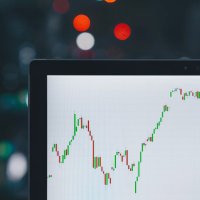Home > Investment Guide > Investing Basics
What is Mutual Fund?
Legally known as an "open-end company", a mutual fund is one of three basic types of investment companies available in the United States. Outside of the U.S., mutual fund is a generic term for various types of collective investment. In the UK and western Europe (including offshore jurisdictions) other forms of collective investment are prevalent including unit trusts, Open-Ended Investment Companies (OEICs), SICAVs and unitized insurance funds.
History
The first open-end mutual fund, Massachusetts Investors Trust was founded on March 21, 1924, and after one year had 200 shareholders and $392,000 in assets. The entire industry, which included a few closed-end funds, represented less than $10 million in 1924.
The stock market crash of 1929 slowed the growth of mutual funds. In response to the stock market crash, Congress passed the Securities Act of 1933 and the Securities Exchange Act of 1934. These laws require that a fund be registered with the SEC and provide prospective investors with a prospectus. The SEC (U.S. Securities and Exchange Commission) helped create the Investment Company Act of 1940 which provides the guidelines that all funds must comply with today.
In 1951, the number of funds surpassed 100 and the number of shareholders exceeded 1 million. Only in 1954 did the stock market finally rise above its 1929 peak and by the end of the fifties there were 155 mutual funds with $15.8 billion in assets. In 1967 funds hit their best year, one quarter earning at least 50% with an average return of 67%, but it was done by cheating using borrowed money, risky options, and pumping up returns with privately traded "letter stock". By the end of the 60's there were 269 funds with a total of $48.3 billion.
With renewed confidence in the stock market, mutual funds began to blossom. By the end of the 1960s there were around 270 funds with $48 billion in assets. The first retail index fund was released in 1976, called the First Index Investment Trust. It is now called the Vanguard 500 Index fund and is one of the largest mutual funds ever with in excess of $100 billion in assets.
One of the largest contributors of mutual fund growth was Individual Retirement Account (IRA) provisions made in 1975, allowing individuals (including those already in corporate pension plans) to contribute $2,000 a year. Mutual funds are now popular in employer-sponsored defined contribution retirement plans (401k), IRAs and Roth IRAs.
As of April 2006, there are 8,606 mutual funds that belong to the Investment Company Institute (ICI), the national association of Investment Companies in the United States, with combined assets of $9.207 trillion USD.[3]
Usage Mutual funds can invest in many different kinds of securities. The most common are cash, stock, and bonds, but there are hundreds of sub-categories. Stock funds, for instance, can invest primarily in the shares of a particular industry, such as technology or utilities. These are known as sector funds. Bond funds can vary according to risk (high yield or junk bonds, investment-grade corporate bonds), type of issuers (government agencies, corporations, or municipalities), or maturity of the bonds (short or long term). Both stock and bond funds can invest in primarily US securities (domestic funds), both US and foreign securities (global funds), or primarily foreign securities (international funds).
Most mutual funds' investment portfolios are continually adjusted under the supervision of a professional manager, who forecasts the future performance of investments appropriate for the fund and chooses the ones which he or she believes will most closely match the fund's stated investment objective. A mutual fund is administered through a parent management company, which may hire or fire fund managers.
Mutual funds are subject to a special set of regulatory, accounting, and tax rules. Unlike most other types of business entities, they are not taxed on their income as long as they distribute substantially all of it to their shareholders. Also, the type of income they earn is often unchanged as it passes through to the shareholders. Mutual fund distributions of tax-free municipal bond income are also tax-free to the shareholder. Taxable distributions can either be ordinary income or capital gains, depending on how the fund earned it.
Net asset value
The net asset value, or NAV, is a fund's value of its holdings, usually expressed as a per-share amount. For most funds, the NAV is determined daily, after the close of trading on some specified financial exchange, but some funds update their NAV multiple times during the trading day. Open-end funds sell and redeem their shares at the NAV, and so only process orders after the NAV is determined. Closed-end funds may trade at a higher or lower price than their NAV; this is known as a premium or discount, respectively. If a fund is divided into multiple classes of shares, each class will typically have its own NAV, reflecting differences in fees and expenses paid by the different classes.
Some mutual funds own securities which are not regularly traded on any formal exchange. These may be shares in very small or bankrupt companies; they may be derivatives; or they may be private investments in unregistered financial instruments (such as stock in a non-public company). In the absence of a public market for these securities, it is the responsibility of the fund manager to form an estimate of their value when computing the NAV. How much of a fund's assets may be invested in such securities is stated in the fund's prospectus.
Turnover
Turnover is a measure of the amount of securities that are bought and sold, usually in a year, and usually expressed as a percentage of net asset value. It shows how actively managed the fund is.
A caveat is that this value is sometimes calculated as the value of all transactions (buying, selling) divided by 2; i.e., the fund counts one security sold and another one bought as one "transaction". This makes the turnover look half as high as would be according to the standard measure.
Turnover generally has tax consequences for a fund, which are passed through to investors. In particular, when selling an investment from its portfolio, a fund may realize a capital gain, which will ultimately be distributed to investors as taxable income. The very process of buying and selling securities also has its own costs, such as brokerage commissions, which are borne by the fund's shareholders.
The Dalbar Inc. consultancy studied stock mutual fund returns over the period from 1984 to 2000. Dalbar found that the average stock fund returned 14 percent; during that same period, the typical mutual fund investor had a 5.3 percent return.[4] This finding has made both "personal turnover" (buying and selling mutual funds) and "professional turnover" (buying mutual funds with a turnover above perhaps 5%) unattractive to some people.
Types of mutual funds
Open-end fund
The term Mutual fund is the common name for an open-end investment company. Being open-ended means that at the end of every day, the investment management company sponsoring the fund issues new shares to investors and buys back shares from investors wishing to leave the fund.
Mutual Funds may be legally structured as corporations or business trusts but in either instance are classed as open-end investment companies by the SEC.
Other funds have a limited number of shares; these are either closed-end fund or unit investment trusts neither of which are mutual funds.
Exchange-traded funds
A relatively new innovation, the exchange traded fund (ETF), is often formulated as an open-end investment company. The way ETFs work combines characteristics of both mutual funds and closed-end funds. An ETF usually tracks a stock index (see Index funds). Shares are only created or redeemed by institutional investors in large blocks (typically 50,000 shares). Investors typically purchase shares in small quantities through brokers at a small premium or discount to the net asset value through which the institutional investor makes their profit. Because the institutional investors handle the majority of trades, ETFs are more efficient than traditional mutual funds and therefore tend to have lower expenses. ETFs are traded throughout the day on a stock exchange, just like closed-end funds.
Equity funds
Equity funds, which mainly consist of stock investments, are the most common type of mutual fund. Equity funds hold 49 percent of total funds invested in mutual funds in the United States. [5] Oftentimes equity funds focus investments on particular strategies and certain types of companies.
Capitalization
Some mutual funds focus investments on companies of particular size ranges, with size measured by their market capitalization. The size ranges include micro-cap , small-cap, mid-cap, and large-cap. Fund managers and other investment professionals have varying definitions of these market cap ranges. The following ranges are used by Russell Indexes [6] include:
Growth vs. value
Another division is between growth funds, which invest in stocks of companies that have the potential for large capital gains, versus value funds, which concentrate on stocks that are undervalued. Growth stocks typically have a potential for larger return, however such investments also bear larger risks. Growth funds tend not to pay regular dividends. Sector funds focus on specific industry sectors, such as biotechnology or energy. Income funds tend to be more conservative investments, with a focus on stocks that pay dividends. A balanced fund may use a combination of strategies, typically including some investment in bonds, to stay more conservative when it comes to risk, yet aim for some growth.
Index funds versus active management
An index fund maintains investments in companies that are part of major stock indices, such as the S&P 500, while an actively-managed fund attempts to outperform a relevant index through superior stock-picking techniques. The assets of an index fund are managed to closely approximate the performance of a particular published index. Since the composition of an index changes infrequently, an index fund manager makes fewer trades, on average, than does an active fund manager. For this reason, index funds generally have lower trading expenses than actively-managed funds, and typically incur fewer short-term capital gains which must be passed on to shareholders. Additionally, index funds do not incur expenses to pay for selection of individual stocks (proprietary selection techniques, research, etc.) and deciding when to buy, hold or sell individual holdings. Instead, a fairly simple computer model can identify whatever changes are needed to bring the fund back into agreement with its target index.
The performance of an actively-managed fund largely depends on the investment decisions of its manager. Statistically, for every investor who outperforms the market, there is one who underperforms. Among those who outperform their index before expenses, though, many end up underperforming after expenses. Before expenses, a well-run index fund should be average. By minimizing the impact of expenses, index funds should be able to perform better than average.
Certain empirical evidence seems to illustrate that mutual funds do not beat the market and actively managed mutual funds under-perform other broad-based portfolios with similar characteristics. [7] finds that nearly 1,500 U.S.A. mutual funds under-performed the market in approximately half the years between 1962 and 1992. Moreover, funds that performed well in the past are not able to beat the market again in the future (shown by Jensen, 1968; Grimblatt and Titman, 1989.[8] However, as quantitative finance is in its early stages of development more accurate studies are required to reach a decisive conclusion.
Bond funds
Bond funds account for 18% of mutual fund assets. [9] Types of bond funds include term funds, which have a fixed set of time (short, medium, long-term) before they mature. Municipal bond funds generally have lower returns, but have tax advantages and lower risk. High-yield bond funds invest in corporate bonds, including high-yield or junk-bonds. With the potential for high yield, these bonds also come with greater risk.
Money market funds
Money market funds hold 26% of mutual fund assets in the United States. [10] Money market funds entail the least risk, as well as lower rates of return. Unlike certificate of deposits (CDs), assets in money market funds are liquid and redeemable at any time.
Hedge funds
Hedge funds in the United States are pooled investment funds with loose SEC regulation, and should not be confused with mutual funds. Certain hedge funds are required to register with SEC as investment advisers under the Investment Advisers Act. [11] The Act does not require an adviser to follow or avoid any particular investment strategies, nor does it require or prohibit specific investments. Hedge funds typically charge a fee greater than 1%, plus a "performance fee" of 20% of a hedge fund's profits. There may be a "lock-up" period, during which an investor cannot cash in shares.
More to Read:
Previous Posts:




